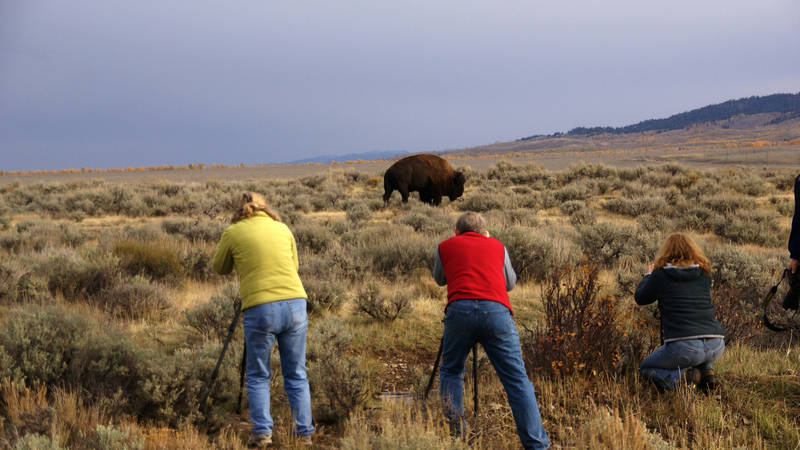You can set a good example for how to behave on public lands. These tips are sensible and easy to follow, and they’ll help you be a good park steward while avoiding embarrassment on social media.
1. Don’t take stuff.
That’s obvious, right? Parks are home to ancient art, historic artifacts, rare plants and many other treasures we know it would be wrong to steal. But visitors don’t always realize that this rule applies to everything in a national park, including twigs and stones and other things we don’t think of as having material value. These seemingly small objects are part of much larger ecosystems that nourish and shelter a range of critters. They need it all more than you do. Plus, it’s just bad luck.
2. Don’t leave stuff.
The classic “pack it in, pack it out” mantra applies to all national parks. Most sites provide bins, so you don’t have to carry your trash very far. And litter isn’t just ugly to encounter on the trail — it can become a serious issue for wildlife, especially food waste. Many species will become desensitized to humans if they become accustomed to finding half-eaten sandwiches and candy bars in populated areas. When bears, coyotes and other animals see people as food sources, it can cause wildlife to become less afraid and more likely to approach humans, creating potentially dangerous situations.
3. Stay on the trails.
Parks are made for exploring, but some places are too delicate or dangerous to withstand throngs of people. Visitors going off-trail can unknowingly trample plants, scare or stress wildlife, or disturb cultural artifacts. Climbing trees can harm sensitive species. And there are many places where people can fall, drown or simply get lost. It’s not worth taking the risk when so many trails are specifically marked and maintained to help people enjoy what is special at a given park.
4. Be mindful of where you bring your dog.
Dogs are some of the best hiking companions, and many national parks have dog-friendly trails — but not all of them. Dogs can aggravate wildlife and disturb plants, so park staff consider carefully which areas are safe for them to use. If you plan to bring a dog to a park, always check in advance to make sure there are appropriate options. Dogs need to be on a leash no longer than six feet, so be sure to pack one, and of course, to pick up any pet waste as you go.

10 Tips to Respect Wildlife, Stay Safe and Avoid Internet Ridicule
Most of us wouldn’t think of putting a bison in our car as two Yellowstone visitors did this spring, but did you know that white shoes and sweat-soaked hiking gear…
See more ›5. Give wildlife plenty of room.
Getting to see wildlife up-close is one of the main reasons people go to national parks. But getting too close puts animals and people at risk. Keep a safe distance — at least 100 yards from bears and wolves and 25 yards from other wildlife — and try to never do anything that alters an animal’s behavior. Remember also that wildlife always has the right of way and give all critters plenty of room to get where they want to go, regardless of whether a bison or a turtle or a butterfly wants to cross in front of you on the road or trail.
6. Take safe selfies.
Be aware of your surroundings when you take pictures — national parks are some of the most special and beautiful places in the country, and you don’t need to put yourself in peril to get great images. Standing too close to cliffs, waterfalls, large animals or other dangers just increases the chances you’ll get seriously hurt or die, and posting these kinds of photos encourages other people to take similar risks.
National parks are places anyone can visit and experience exceptional vistas and adventures. Following a few commonsense practices will help ensure that they — and you — will continue be around for years to come.
Want more great national park stories and news? Join our email list and get them delivered to your inbox.
Stay On Top of News
Our email newsletter shares the latest on parks.